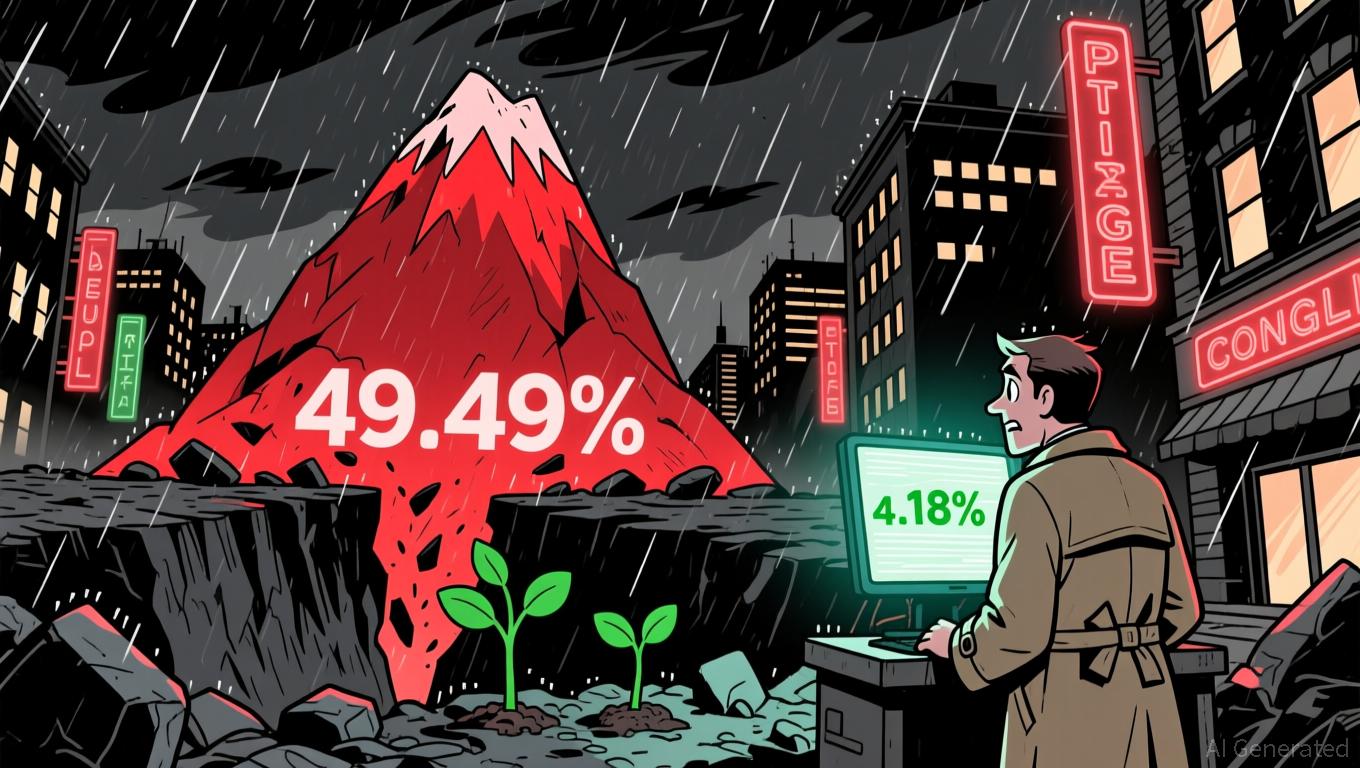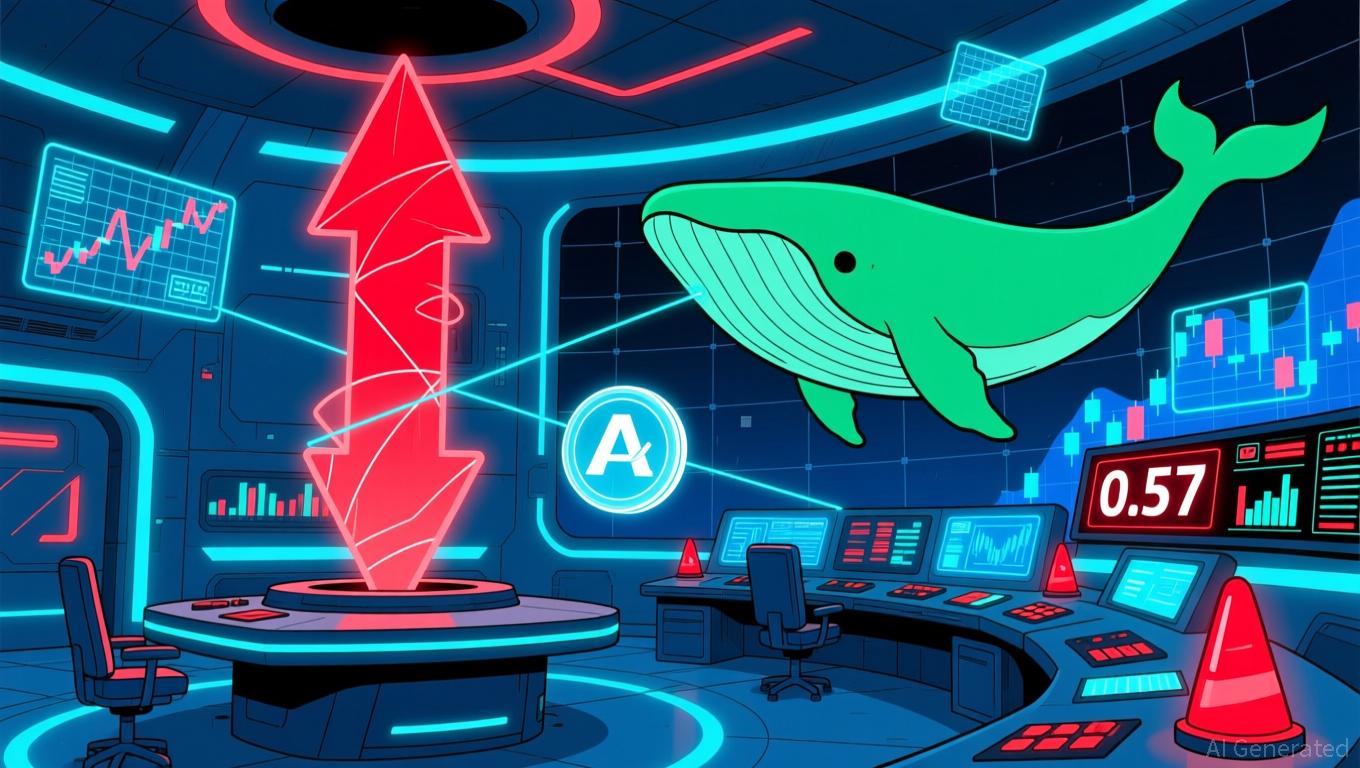News
Stay up to date on the latest crypto trends with our expert, in-depth coverage.
- Franklin Templeton and Grayscale's XRP ETFs cleared NYSE Arca approval, set for Nov 24 launch, marking institutional adoption of digital assets. - XRPZ ETF (0.19% fee) and Grayscale's entry boost institutional credibility, with XRP rising 5% amid 26% higher trading volume. - Analysts project 465% XRP price potential by 2028 via ETF-driven demand, though BlackRock's potential entry could strain XRP's 60B token supply. - Regulatory clarity and pro-crypto policies, including the Genius Act, reinforce invest

- FG Nexus sold $32.7M in ETH to repurchase 8% of shares amid 94% stock price drop, reflecting DAT sector struggles with NAV discounts. - Industry-wide $4-6B in forced crypto liquidations by DATs highlights systemic risks as debt rises and liquidity tightens across firms like ETHZilla and AVAX One . - Analysts warn debt accumulation and stalled corporate buying could worsen instability, while companies pivot to tokenization to address declining investor appetite. - Market skepticism persists as FG Nexus tr

- Algorand (ALGO) dropped 1.74% on Nov 24, 2025, extending its 1-month decline to 20.35% amid sustained bearish sentiment. - The token’s annual price has fallen 57.76% from its peak, driven by macroeconomic volatility and uncertainty over potential interest rate cuts. - No ALGO-specific news or on-chain developments were reported, with price movements linked to broader economic factors and risk appetite shifts. - Analysts warn the bearish trend may persist unless major upgrades emerge, urging investors to

- Trump's DOGE department, aimed at cutting federal spending, was disbanded early, with functions absorbed by OPM. - DOGE's aggressive cost-cutting, including $1.9B in canceled contracts, faced scrutiny over lack of transparency and legal concerns. - The DOGE cryptocurrency token fell 53.85% in a year, while Grayscale launched spot ETFs as the department dissolved. - Former DOGE staff now hold federal roles, but its legacy raises ongoing questions about executive authority in reform efforts.

- YFI rose 1.18% in 24 hours to $4,036 but fell 49.49% annually, highlighting extreme volatility. - Short-term gains lack clear catalysts, with analysts noting broader market dynamics drive fluctuations. - Long-term bearish trends persist despite temporary rebounds, urging caution amid macroeconomic pressures.

BMNR price dropped almost 22.7% this week, hitting fresh lows under $26. The fall looks sharp, but the stock is still up more than 160% over the past six months. Now, a small rebound looks likely on a daily chart. Traders would want to know whether this is only a bounce or the start of

- Aave's AAVE token faces volatility risks near 0.57 support level, with whale accumulation and leveraged positions amplifying short-term instability. - A major Aave whale added 24,000 AAVE tokens (total 276,000) at $165 average cost, but remains vulnerable to repeat October 11 liquidation risks. - A $80M WBTC long position on Aave approaches $65,436 liquidation threshold, threatening forced selling and downward price pressure. - Tangem's Aave-integrated stablecoin yield feature highlights protocol's DeFi

- Grayscale positions Chainlink (LINK) as critical infrastructure linking crypto and traditional finance, citing its role in tokenization, cross-chain settlement, and RWA integration. - LINK's modular middleware enables secure data access and compliance, elevating it to the largest non-layer 1 crypto asset by market cap (excluding stablecoins). - Grayscale highlights Chainlink's partnerships with S&P Global and FTSE Russell, alongside a $35.6B tokenized asset market, as catalysts for institutional blockcha

- CITES CoP20 in Uzbekistan proposes historic protections for 12 shark/ray species via Appendix I listings and stricter Appendix II monitoring. - Genetic testing reveals illegal shark trade volumes exceed official records by 10-70x, with Hong Kong as a key trafficking hub despite zero-export claims. - Portable DNA tools now enable real-time identification of 38 CITES-listed species, aiding enforcement in Indonesia, Ecuador, and other source countries. - Experts stress CITES is critical to prevent extinctio
- Hedera's HBAR token fell below $0.145 support to $0.1373, triggering liquidity concerns and bearish technical signals amid sharp volume collapses and trading halts. - Institutional selling and failed recovery attempts intensified on Nov. 18-20, with 71%-180% volume surges highlighting structural weakness and resistance breakdowns. - A descending channel pattern and exhausted buyer momentum suggest prolonged weakness, with critical support at $0.1457 now under pressure to prevent deeper declines. - Market
- 01:08Arca Chief Investment Officer: Strategy does not need to sell BTC at allJinse Finance reported that Arca Chief Investment Officer Jeff Dorman posted this morning: "For years, I have been refuting misconceptions about Strategy (MSTR), but every time BTC drops, the same nonsense resurfaces—people claim that MSTR will be forced to sell BTC, or that its holdings will be liquidated, as if this were some kind of leveraged perpetual contract... Anyone who spends less than five minutes consulting any debt or equity expert will understand that unless BTC's decline reaches a point where MSTR's selling becomes insignificant, MSTR simply does not need to sell BTC." Dorman added that the main reasons MSTR does not need to sell BTC are as follows: 1. Considering that Saylor holds 42% of the shares, it is almost impossible for activist investors to take control of the board; 2. There are no mandatory sale provisions in the debt terms; 3. Interest payments are within a controllable range (don't forget that its core technology business can still generate positive cash flow); 4. Very few companies default due to debt maturity (investors are like a flock of sheep and almost always choose to extend the debt—solving problems by delaying them).
- 00:48"Fed Mouthpiece": The Fed's Preferred Inflation Gauge May Remain Largely UnchangedJinse Finance reported that a report co-authored by Nick Timiraos, a journalist from The Wall Street Journal and known as the "Fed Whisperer," pointed out that according to data released by the U.S. Department of Labor on Tuesday, although rising energy and food costs in September pushed up wholesale prices, some items included in the Federal Reserve's preferred inflation gauge may keep this indicator roughly in line with recent months. After a 0.1% month-on-month decline in August, the Producer Price Index (PPI) rose 0.3% month-on-month in September, in line with economists' expectations. PPI data usually fluctuates more than the prices consumers see in stores and online. Excluding food and energy, core PPI rose less than expected, up 2.6% year-on-year, marking the mildest increase since July 2024. Due to a government shutdown causing a delay in data release, this PPI data was published more than a month later than originally planned. Two weeks after the deadlock ended, federal statistical agencies are still working hard to catch up on data releases. PPI data has limited impact on Federal Reserve policymakers, but some of the price data released on Tuesday will be used to calculate the Personal Consumption Expenditures (PCE) price index—a key indicator for the Fed to measure progress toward its 2% inflation target. The PCE index is compiled by combining relevant data from PPI, the Consumer Price Index (CPI), and import prices. As these data are released, forecasters can reliably estimate the approximate level of the PCE index.
- 00:42Data: The S&P 500 Index is expected to rise to 7,490 points next year, but a correction may occur in the next three months.According to ChainCatcher, citing Jinse Finance, a Reuters survey of stock market strategists shows that the S&P 500 index is expected to close at 7,490 points by the end of 2026, representing an increase of approximately 11.7% from current levels. In the survey, more than 45 strategists believe the index will rise for a fourth consecutive year. However, eight respondents believe there is a high possibility of a pullback in the next three months. Analysts pointed out that the risks to this optimistic forecast include a rebound in inflation and uncertainties regarding the outlook for interest rate cuts. The survey also predicts that the Dow Jones will end next year at 50,566 points, up more than 7% from current levels.